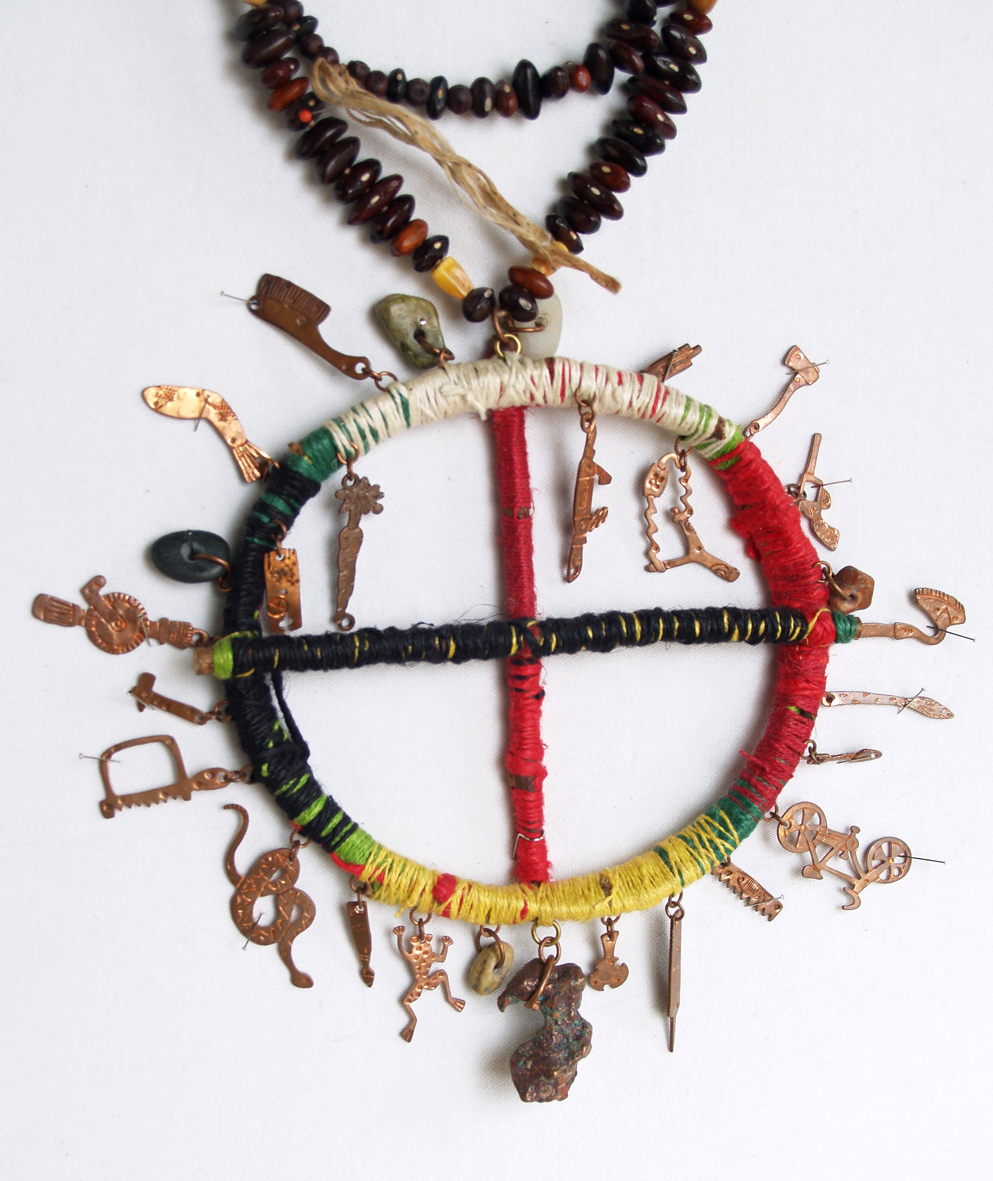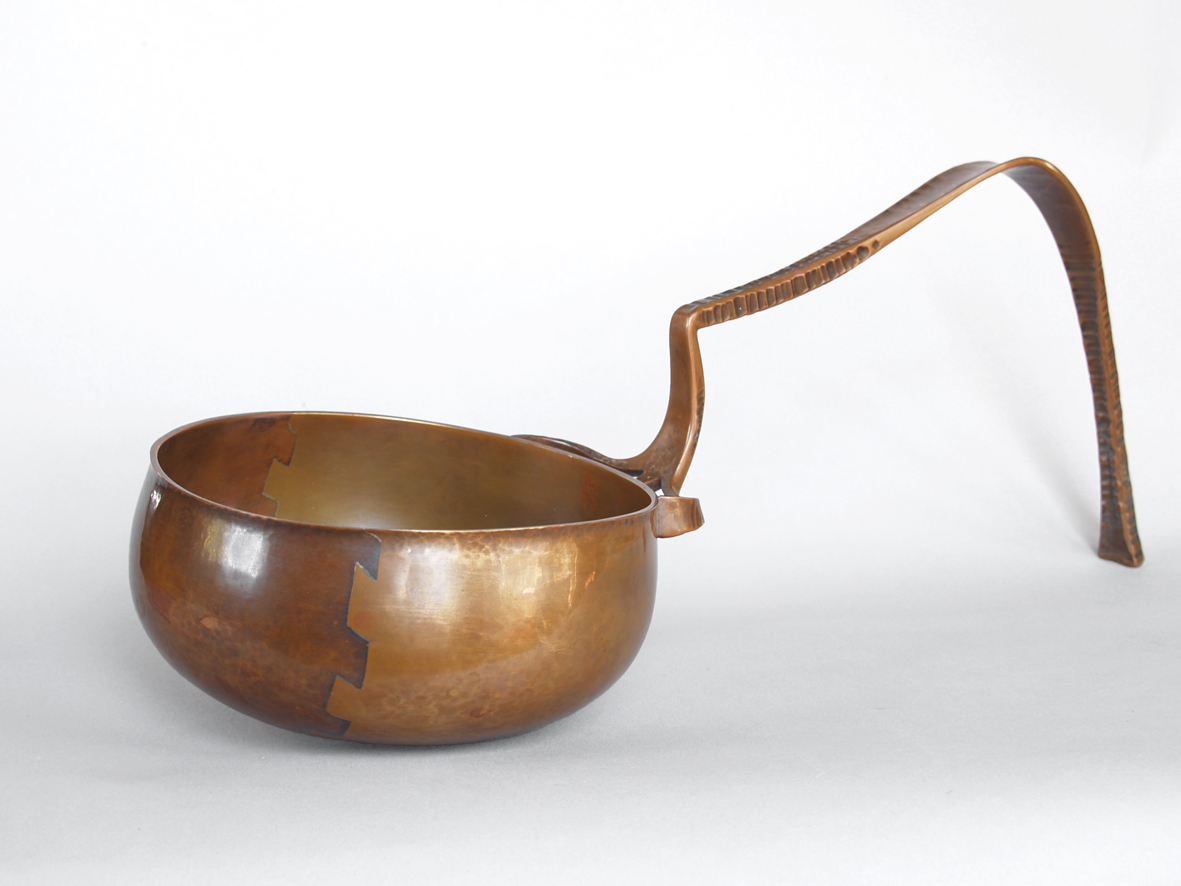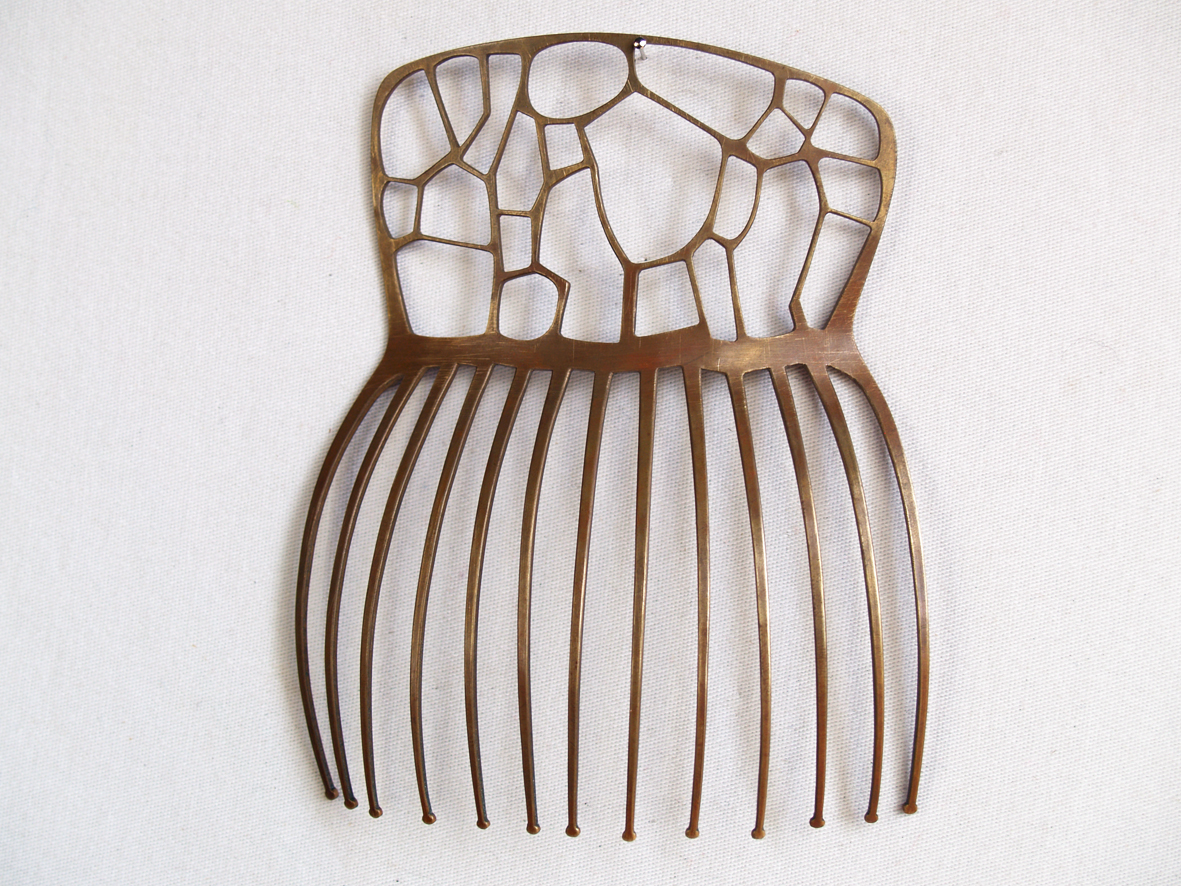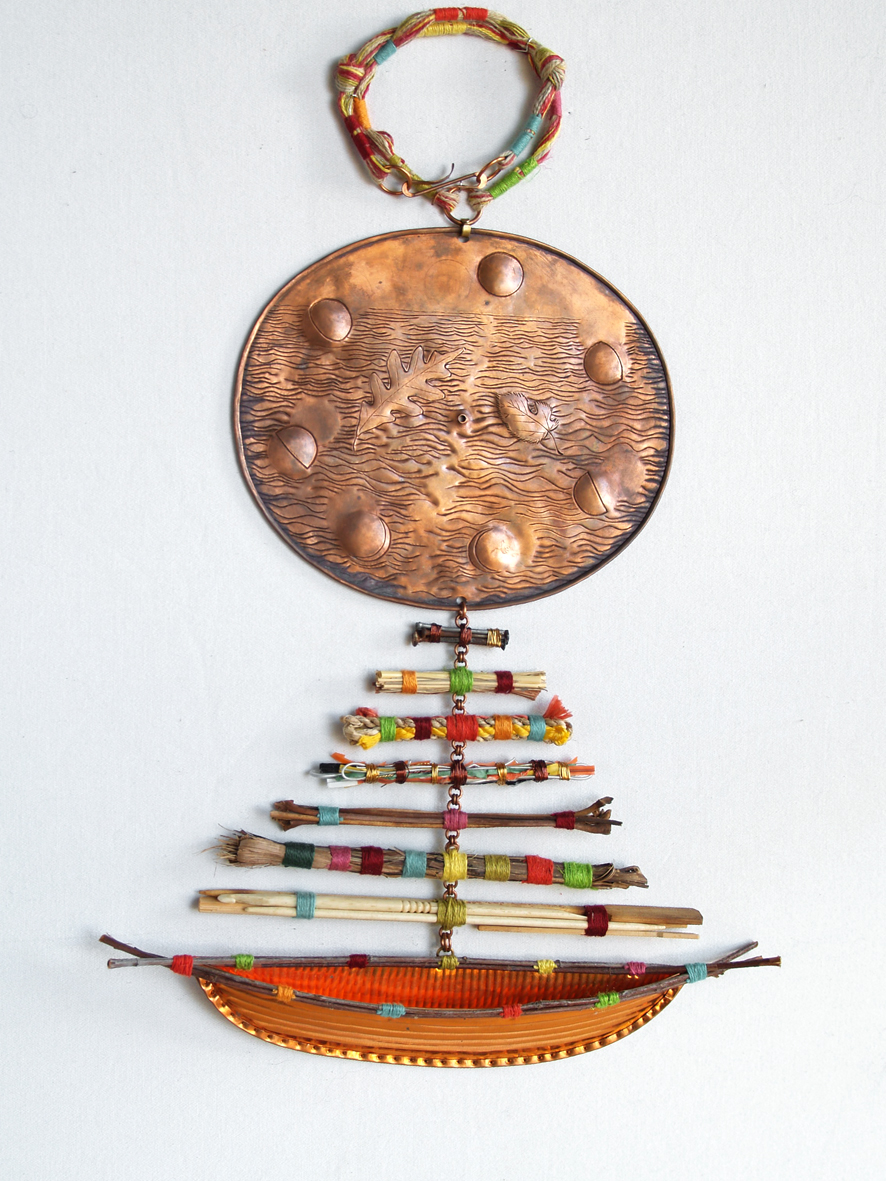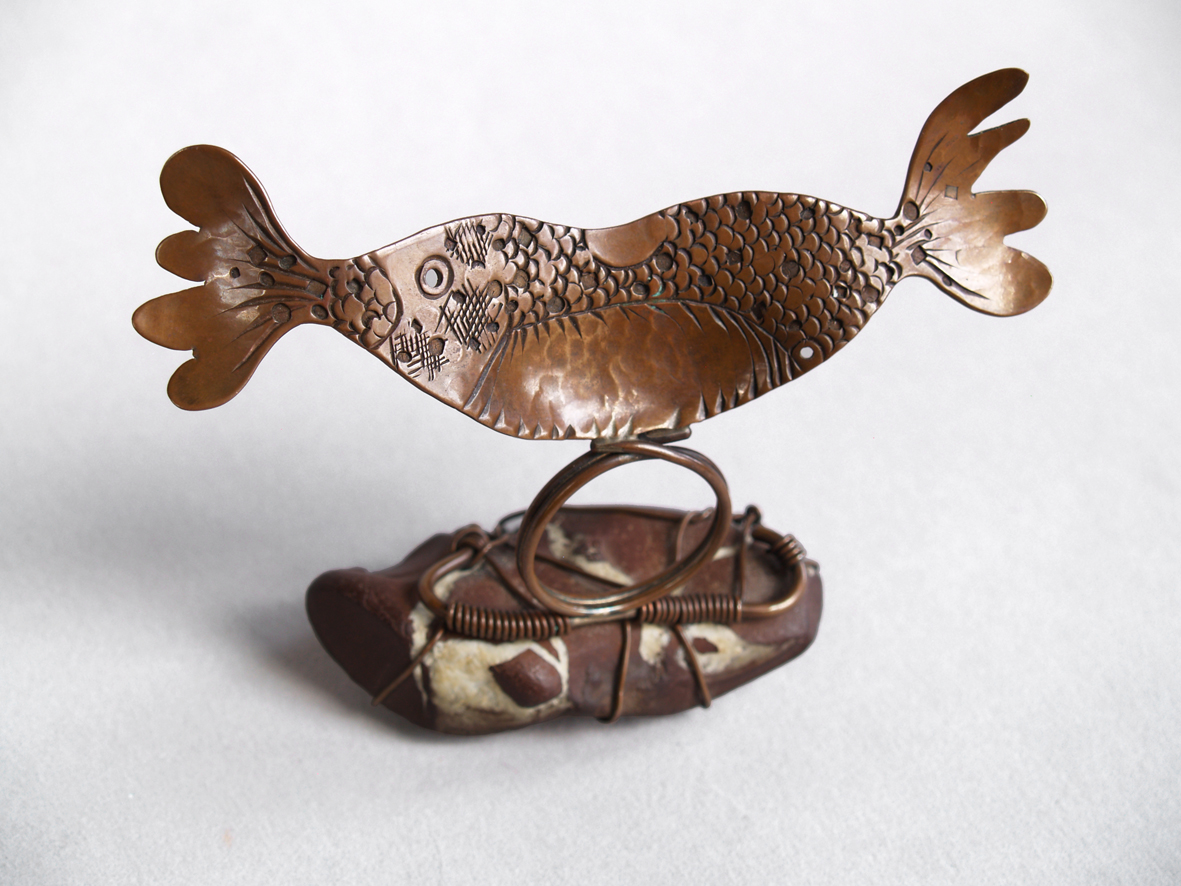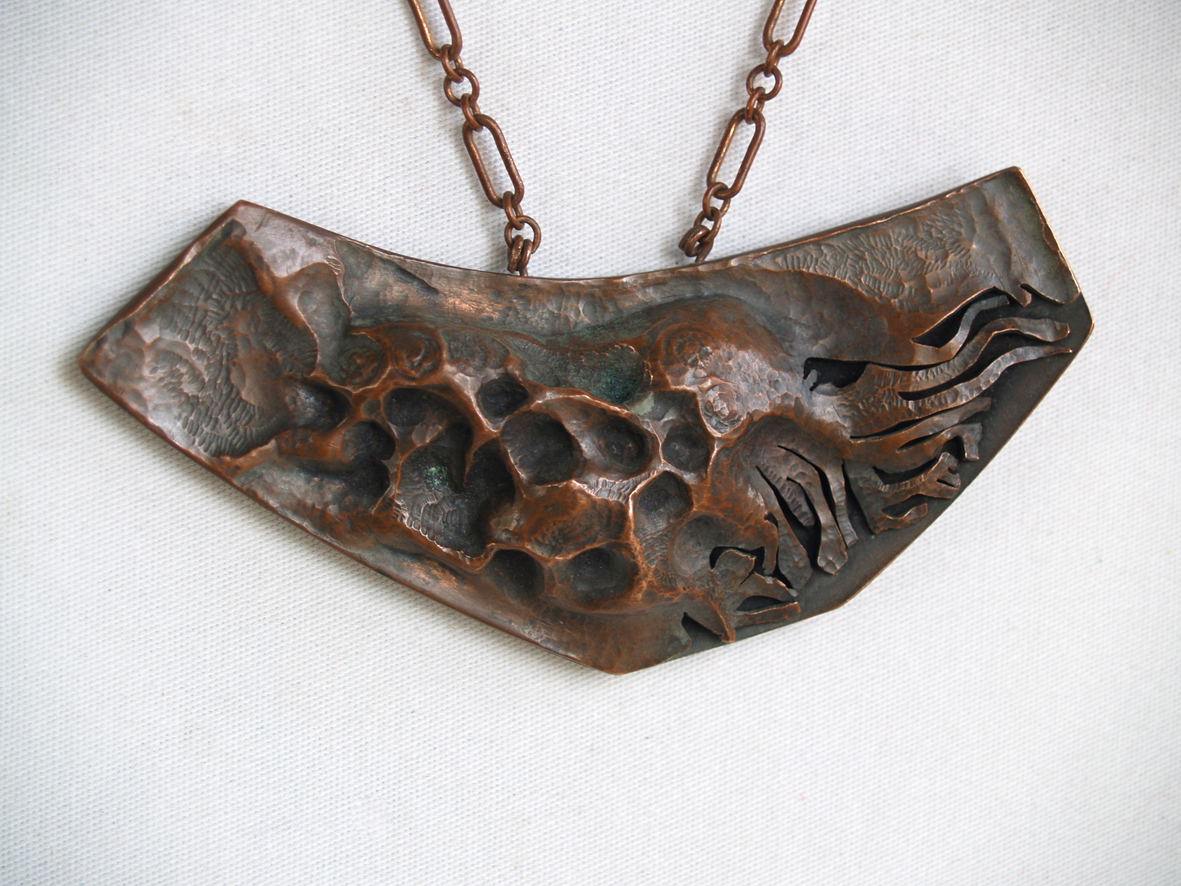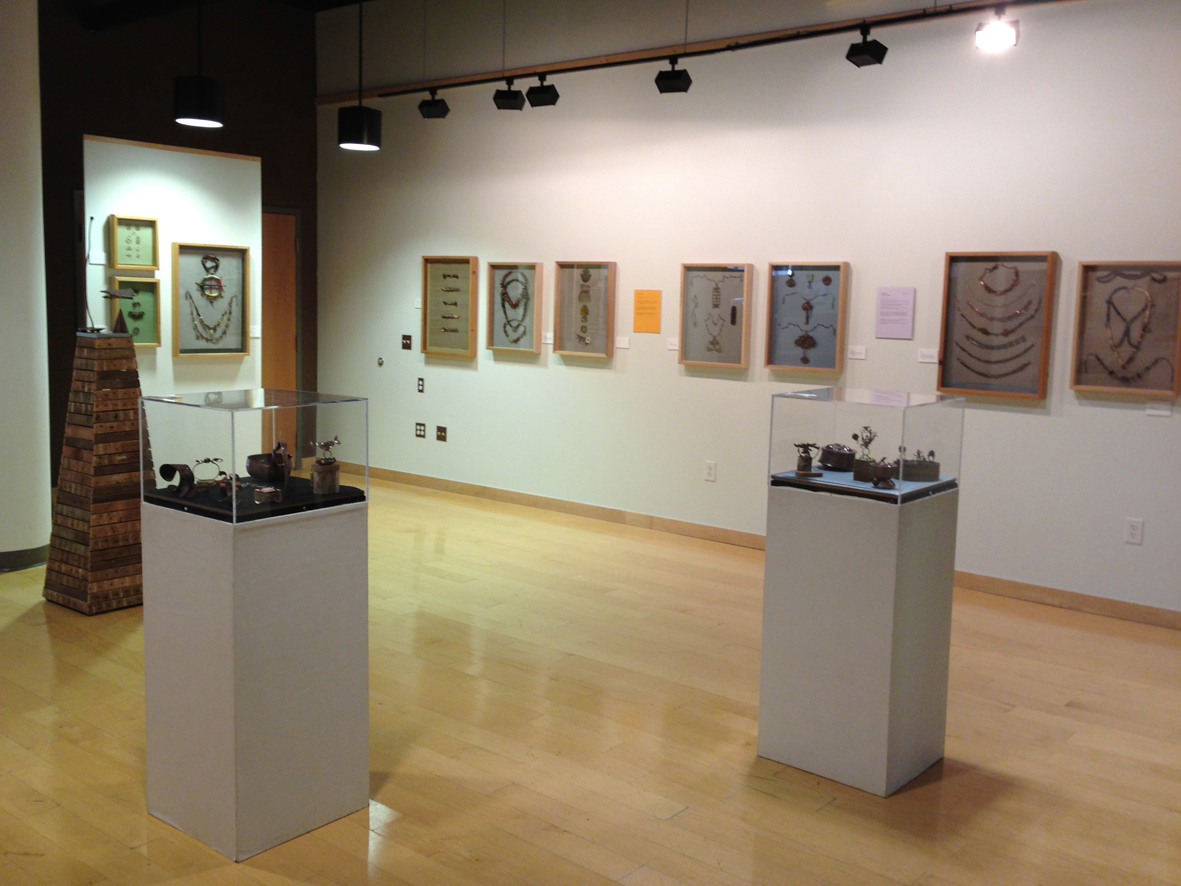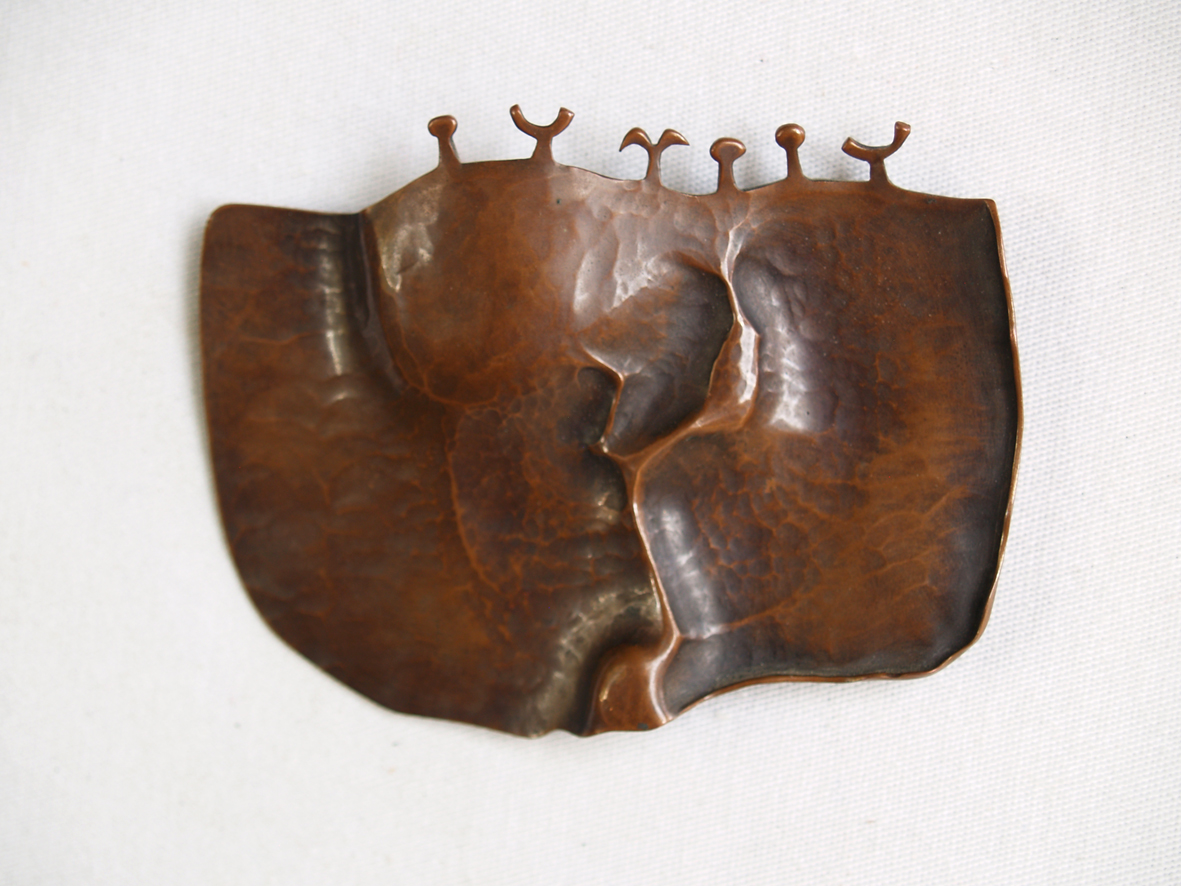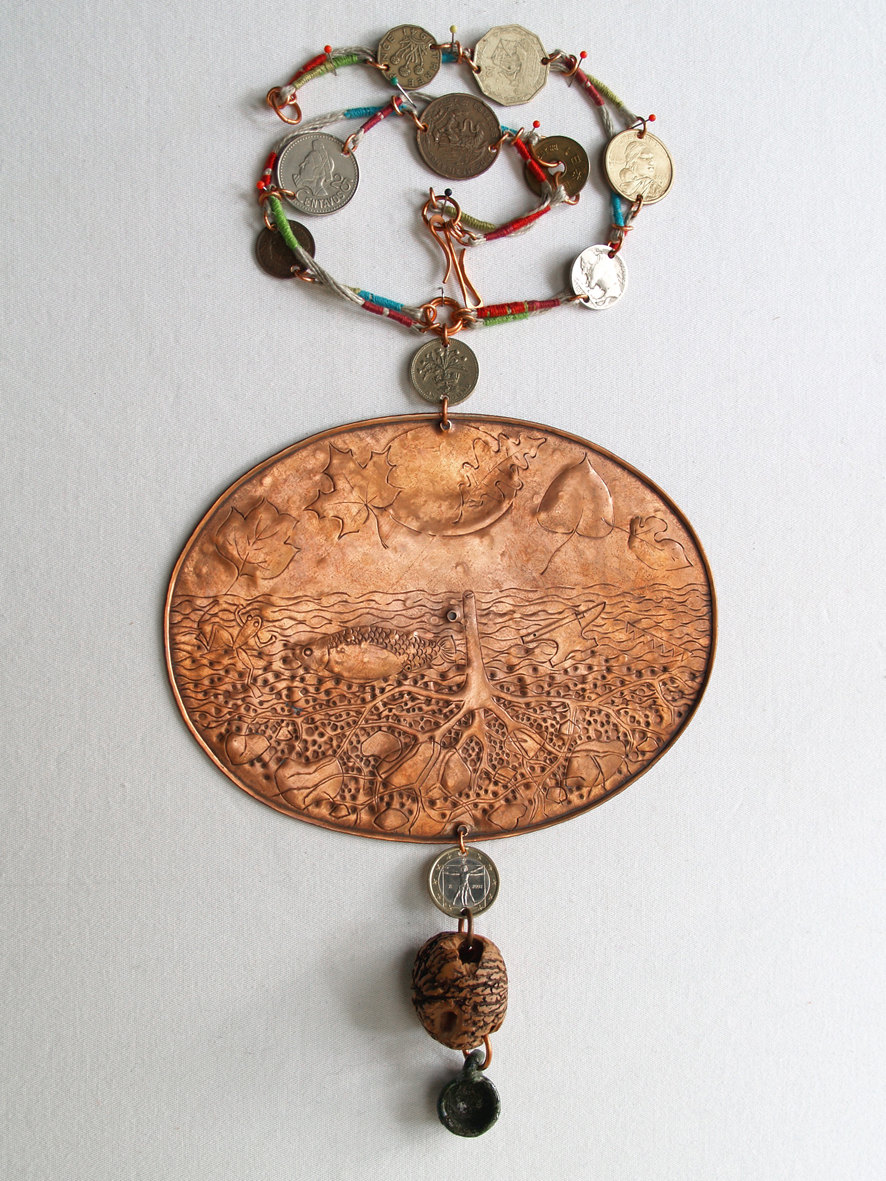Paul Mergen: A Life in Copper
A Review of the Retrospective: So What 50?
At the Arts Council of Greater Kalamazoo, October 2-26, 2012
This article was originally published on Art Jewelry Forum in March 2013.
Though not widely known, Paul Mergen is an American metalsmith and educator who has been practicing with focus and purpose for 50 years. In fact, his work has existed outside the mainstream of the metals and jewelry field, in semi-isolation, for the better part of his career. Mergen’s recent retrospective, So What 50, at the Arts Council of Greater Kalamazoo featured 150 works – primarily in copper – spanning fifty years. Accompanying the works were handwritten contextual statements situating the work within the artist’s own practical philosophies of making, giving, family, nature and Art. By any measure the show held a tremendous amount of work with more than 30 shadow boxes and 5 pedestals in the 700 square foot gallery in Kalamazoo, Michigan. The exhibition highlighted Mergen’s prodigious skill, though technical mastery was nearly always in the service of advancing narrative, thematic or cultural concerns.
The show was organized in a loose chronology, with obvious thematic trends existing in Mergen’s early, middle and late career. Mergen’s earliest works in the show hail from his student years at the University of Wisconsin – Madison, a student of Art Vierthaler and Fred Fenster (Mergen was in fact Fenster’s first graduate student in 1962). In a 2004 interview for the Archives of American Art Fenster reflected that, ‘Paul’s a natural hammer man. I mean, he took [to] the hammer like no one I’ve ever seen’ (Fenster 2004). Mergen’s allegiance to copper began with its working properties and conceptual purity. In his annotations he refers to copper as ‘the mother metal,’ and from his early career he used it subversively, as a low material, perhaps precluding himself from early recognition. The premier works of Mergen’s early jewelry combined forging, repoussé and piercing to achieve contrast in form, visual weight and texture. A forged and repousséd necklace from 1964 and a brooch with sprout forms from 1972 are two fine examples. These are archetypal works for their time and it is from this origin – at the center of the coalescing American metalsmithing academy – that Mergen departs, moving towards his esoteric interests, developing his own artistic inquiry.
By the late 1960s Mergen had begun to explore additional themes, most notably international indigenous craft traditions. A series of pierced combs and brooches from 1966 demonstrate an early interest in pre-Columbian metalwork. Unlike the cultural pilfering of Robert Lee Morris a decade later, Mergen’s appropriations revel in the spirit of the original, more in league with revivalism than appropriation.
Mergen’s interest in copper hollowware began with his 1964 thesis exhibition at Madison and he continued to make hollowware at regular intervals throughout his career. In 1965, Mergen took a job at Western Michigan University teaching metalsmithing and jewelry making alongside Bob Engstrom whose expertise in Scandinavian design seems to have influenced some of Mergen’s work, such as Big Dipper (1974), a keyed-seam ladle-bowl with a wonderfully complicated forged copper handle. Along with Big Dipper, So What 50 features a number of raised and seamed organic copper vessels with multi-node feet. Several notable works are from the 1970s, including Big Dipper and an untitled curvilinear bottle form from 1979. Mergen’s vessels from the 1970s, at once formal and whimsical, compare favorably with any unadulterated hollowware forms today.
The 1970s also saw Mergen gradually shift towards more personal themes, with strong narrative imagery emerging as Paul and his wife Brenda started a family in Kalamazoo, Michigan. Family Portrait (1976), a substantial necklace with intense piercing and accumulated charms has clearly personal, narrative and symbolic value and is a work emblematic of this shift. From this point forward Mergen used both piercing and chasing to create intense imagery in his work. The late 1970s and 80s saw an increasing interest in the representation of nature while the use of fibers, tumbled stones, seeds and coins were incorporated into his material and compositional lexicon. Wrapping and bundling also became standard practices.
With Engstrum’s retirement from Western Michigan University in 1984 Mergen became the sole metals faculty. During the late 1980s Mergen’s practice became noticeably isolated from dominant trends in American metalsmithing and jewelry making. While others were anodizing and using color core to create highly formal works, Mergen developed a personalized vocabulary embracing the sentimental. Chased fish in particular are a reoccurring theme. Fish Ring (1989) is a good example of Mergen’s copper work from this period as is Stick Work Necklace (1994) with its strung seeds and stones, its thread wrapped frame and its immaculately sawn and chased charms that include depictions of farm tools, a bicycle, a slingshot, a snake, asparagus and a mill bastard file. The influences in Mergen’s work shifted almost exclusively to nature, world culture and his family life. At a time when craft struggled to emulate and be accepted by the Art world, Mergen was expertly utilizing the most traditional jewelry techniques to create substantive works, which solely satisfied his own artistic curiosity.
Acknowledging the errant nature of Mergen’s practice allows for critical analysis to exist outside the relativistic rubric usually used to assess historical works. Set within this landscape of willful isolation, Mergen’s mid and late career output could be approached as outsider or folk art were it not for his academic training and position within the academy. Frankly, Mergen’s folksiness can distract from some of the more interesting technical and relational projects he unfurled. For instance, beginning in 1988, Mergen began casting and distributing commemorative pewter coins to honor relatives, friends, colleagues and people he met on his world travels. With the altruistic motivation of sharing his enthusiasm for coinage and commemoration, Mergen minted more than 1,800 coins, and distributed them on 3 continents, in 13 countries, and in 29 states. This little known project, which stems from intensely personal motivations, situates Mergen as a forerunner of social practice artists like Michael Strand, while quietly deploying one of the longest running and far reaching craft-based relational projects to date.
The last fifteen years in Mergen’s career are also represented in the exhibition. This most recent period yielded his most ambitious works since the late 1970s, bearing witness to lessons learned over a long and prodigious career. Fish Box (2001) is a great example of how Mergen has revisited previous forms and themes such as the seamed vessel, the multi-node foot, and the chased fish form. Since his retirement from teaching in 2003 Mergen has made a series of necklaces that combine large intricately chased medallions with colorful wrapped thread, bundles of sticks, found and altered natural materials, coins and other elemental forms. Echo of the Sun (2008) and Underwater, Under Sky (2012) are both good examples of Mergen’s late career style. The tightly composed works demonstrate a reverence for nature, natural phenomena and historical world jewelry, situating Mergen’s intensely personal style within a global lineage of jewelry makers. They are certainly the most ambitious works of his later career, clearly articulating a personal vocabulary of technique, form and material cultivated over fifty years.
So What 50 is a generous yet sprawling retrospective documenting the career of a little known American Coppersmith. Paul Mergen invites us to share his journey from grounded studio craftsman to holistic metalsmith-shaman, taking great pains – through wonderful handwritten annotation – to bring his audience along on his life journey. For the jewelry connoisseur or historian the work of Paul Mergen presents a highly stylized and sophisticated vision for the nexus of 20th century metalsmithing and the lessons of pre-Columbian and native folk jewelry traditions. Ultimately, the retrospective rewards those who are patient with intricate works that oscillate between sublime cultural conflation and sentimental kitsch, each a celebration of technique, form, historical precedent and material.
Bibliography
Fenster, Fred. Oral History Interview with Fred Fenster. Interviewed by Jan Yeager. Archives of American Art, Smithsonian Institution. August 9-10, 2004.
